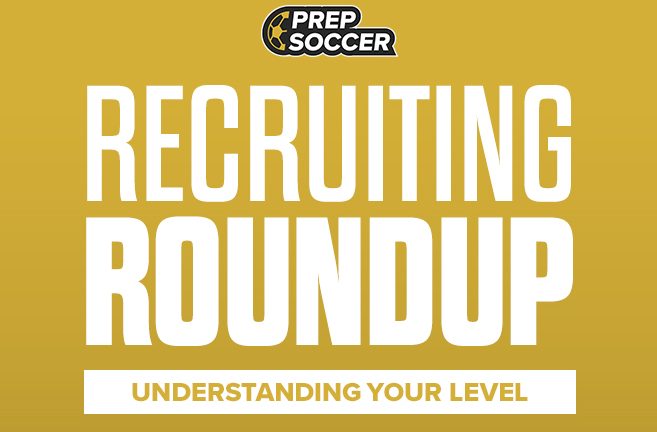<!-- wp:paragraph -->
<p>I talk to a lot of college coaches on both the men's and women's side and it's safe to say that the game is changing drastically. With the possibility of a longer season as well as athletes now having the ability to get paid on top of their scholarship money, new realities have to be considered. Some coaches remain firm on their recruiting practices focusing on players who are 16-18 coming out of high school meaning they start their NCAA careers at 18 or 19. Others have become a little more fluid in their practices of selecting players to recruit. Although many of them differ on what the future holds one thing is certain. College soccer is getting older.</p>
<!-- /wp:paragraph -->
<!-- wp:paragraph -->
<p>I am of the opinion that coaches who are stuck in their ways of recruiting will get left behind by the coaches who are more willing to innovate. If I see a team made up of 18-23 year olds going up against a team with 18-27 year olds I immediately give the advantage to the latter. My concept is quite simple athletes peak in their mid to late 20's. If a coach is looking at it from a performance angle recruiting older players who are closer to their prime physical condition makes a ton of sense.</p>
<!-- /wp:paragraph -->
<!-- wp:paragraph -->
<p>As of now an athlete can only play 4 years at a university, I am hearing whispers of this changing soon with 5 years of eligibility a real possibility in the near future. 4 or 5 years is a small time window and for many athletes after they are done playing collegiately they are done playing altogether. The crazy thing to me is that 99% of American collegiate athletes are just about to enter their prime physical condition when the NCAA kicks them out. Some try a "professional" career, very few make it. And many of the one's that are fortunate enough to sign a professional contract are actually signing for similar or less money than what they were receiving in scholarship dollars from their university.</p>
<!-- /wp:paragraph -->
<!-- wp:paragraph -->
<p>It's mind boggling to me that a player on a full ride scholarship which can be worth up to $90,000-$100,000 (depending on the school) a year is considered an amateur and a $24,000 a year USL contract is considered as a professional. It doesn't really add up to me. This notion of amateurism in college sports is dying and coaches have to see the new reality of the current climate in order to succeed in the future.</p>
<!-- /wp:paragraph -->
<!-- wp:paragraph -->
<p>With roster size limits, NIL/Collective dollars, new rules regarding eligibility, and the increased interest in older players from abroad has severely cut down the amount of opportunities available for young domestic prospects looking to play collegiately. It's an unfortunate reality for this new crop of talent and I challenge this new generation of players as well as their parents who have division 1 aspirations to start thinking a little longer when it comes to their current situation.</p>
<!-- /wp:paragraph -->
<!-- wp:paragraph -->
<p>There will always be that small group of players who are ready to step up and perform in a division 1 setting right out of high school. This is not who this article is tailored towards. I'd argue that the cases of players who are ready to compete at 18 will continue to shrink given the current climate as the college game is going to improve drastically in the coming years. If I was a young athlete looking to play in college (male or female) I would want to enter the market as close to my peak as humanly possible.</p>
<!-- /wp:paragraph -->
<!-- wp:paragraph -->
<p>There are a number of ways to achieve this. Prep schools or a 5th year of high school are a great option and I believe will become more and more popular. Many Prep Schools are set up to help the athlete develop and some even offer collegiate courses as to get some credits before attending a university. A big draw back in attending a prep school is that without a scholarship to attend, they can be very expensive. </p>
<!-- /wp:paragraph -->
<!-- wp:paragraph -->
<p>Taking a gap year or even a couple of gap years is another solution to this problem. Going overseas to play or staying domestically to play in leagues like the UPSL, USL2, NPSL, and the newly formed The League will also grow in demand. The draw backs to this option can leave an athlete falling behind academically. However, if the young player is committed to taking online courses and/or take community college classes while they are in their gap year(s) they don't have to fall too far behind in their academic pursuits. </p>
<!-- /wp:paragraph -->
<!-- wp:paragraph -->
<p>Attending and playing for a JUCO is a fantastic option especially after the Pavio ruling, stating that the number of years an athlete played at a Junior College doesn't count towards their 4-year NCAA eligibility. This gives an athlete up to two more years to develop and become good enough to play at the Division 1 level. This also gives the student-athlete the ability to not fall behind academically as the classes taken at a JUCO usually transfer over to 4 year institutions and count towards their bachelor's degree. JUCO's tend to be much cheaper then 4-year institutions as well. </p>
<!-- /wp:paragraph -->
<!-- wp:paragraph -->
<p>If I can paint a picture for the 2025-2027 classes who are currently not getting the attention from the universities that they desire. I would stress to them be patient! This new climate of collegiate sports is not the one that your parents grew up in or even players who are 2 or 3 years older than you went through. Collegiate coaches are going to be looking more and more at older players to fill their rosters. And the ones who don't will lose more games than the ones who do. If you attend a prep school or do a gap year for a season that puts you at age 19. If you don't get an offer you want after that, attending a JUCO for a year or two would take you to the age of 20 or 21 with many of your general education courses taken care of. Hopefully you get an offer that you want in those two years. And if you don't you still have a red shirt year option to take as well which brings you to the age of 22 with 4 years left of eligibility to not only play but pursue higher education and NIL dollars. This gives the athlete the potential to play collegiately until they are 26 or 27.</p>
<!-- /wp:paragraph -->
<!-- wp:paragraph -->
<p>If I really look at this current crop of 2025, 2026, and 2027 athletes I see more possibilities and options than ever before. Is it harder to get recruited to a division 1 program right out of high school yes. However, if played correctly the opportunities that are being presented to this new crop of prospects gives them the opportunity to play for longer, achieve higher degrees, and for the lucky few earn NIL compensation on top of their scholarships. I'd argue that this is the most exciting time to be an aspiring NCAA student-athlete. You should look at this new world with excitement not disdain.</p>
<!-- /wp:paragraph -->
<!-- wp:paragraph -->
<p></p>
<!-- /wp:paragraph -->
I talk to a lot of college coaches on both the men's and women's side and it's safe to say that the game is changing drastically. With the possibility of a longer season as well as athletes now having the ability to get paid on top of their scholarship money, new realities have to be considered. Some coaches remain firm on their recruiting practices focusing on players who are 16-18 coming out of high school meaning they start their NCAA careers at 18 or 19. Others have become a little more fluid in their practices of selecting players to recruit. Although many of them differ on what the future holds one thing is certain. College soccer is getting older.

Continue reading this article and more.
Continue Reading
Already a subscriber?
Log in





